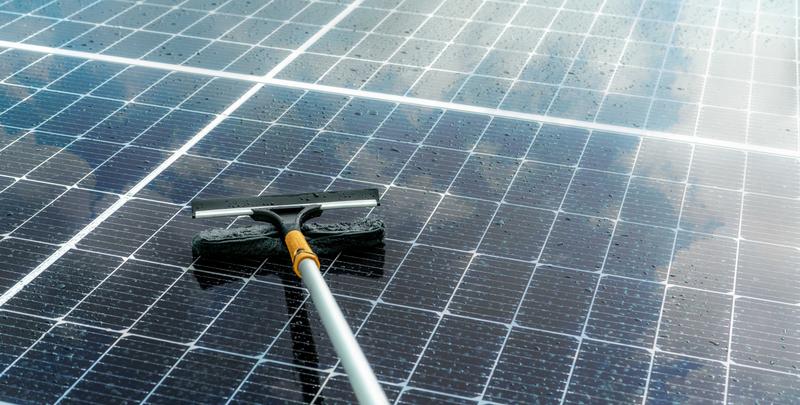
For those who’re seeking a large-overall performance
Why Photo voltaic Panel Cleansing Issues
Photo voltaic panels capture Vitality at their ideal when thoroughly clean. Dust, pollen, chicken droppings, and smog decrease effectiveness—sometimes by twenty% or even more. Typical cleansing will help retain best performance, increase panel lifestyle, and guard your expense.
Major Benefits:
- Improved Strength output
- Lower electric power expenses
- Extended panel lifespan
- Minimized hazard of micro‑cracks as a result of thermal hotspots
Forms of Solar Cleaning Resources
Choosing the correct tool depends upon your setup, h2o availability, and desired ease. Classes consist of:
- H2o‑driven solar brush programs
- Portable photo voltaic panel cleaning kit bundles
- Pure h2o cleaning units
- Rotary solar brushes and extension poles
H2o Powered Photo voltaic Brush Units
These brushes hook up with a drinking water source and spin whilst dispensing h2o, combining cleaning and lubrication in a single action. The end result: spotless panels without having scratching.
Key Features:
- Integrated water feed throughout the brush head
- Gentle bristles Harmless for glass surfaces
- Rotary motion lessens handbook energy
- Mounts on extension poles for rooftop access
Transportable Photo voltaic Panel Cleansing Package
A complete
- Brush head (preset or rotating)
- Extension pole (adjustable lengths approximately six m)
- Hose adapters or quick‑hook up fittings
- Pure‑h2o tank or filtration system
- Comfortable microfiber towels or squeegees
- Non‑abrasive cleansing Answer (if allowed)
Benefits of All-in-Just one Kits:
- Begin cleaning with negligible set up
- Compact for storage or travel
- Compatible with residential or business photo voltaic arrays
Pure H2o Photo voltaic Cleaning Systems
These programs purify local drinking water—getting rid of minerals and Dust—so it gained’t leave scale or streaks. Pure water empowers Specialist-quality effects without having chemical substances.
How It Works:
- Pretreatment filtration (sediment, carbon, ion exchange)
- Closing deionization or reverse‑osmosis stage
- Filtered water circulated as a result of brush for cleaning
- Residue‑absolutely free drying—no spots or streaks still left driving
Rotary Photo voltaic Brush & Extension Poles
For big photo voltaic arrays or commercial use, a power-rotating head with a telescoping extension pole will make cleaning economical and Harmless.
Advantages:
- Considerably less Bodily exertion, speedier coverage
- Arrive at roofs and floor‑mounted panels simply
- Adjustable shaft lengths for different angles
- Universal brief‑hook up guidelines for extras
Target Security & Most effective Methods
Cleaning photo voltaic panels will involve heights and slippery surfaces—basic safety first:
- Use non‑conductive extension poles
- Stay away from force washers which can crack glass
- Do the job early or late to prevent glare and heat
- Don grips and slip-resistant sneakers
- Observe area drinking water‑use regulations or restrictions
Action‑by‑Phase Cleansing Program
- Flip from the solar inverter or be certain process is deactivated
- Rinse panels with minimal‑tension water
- Utilize a brush (or photo voltaic brush kit) with h2o feed
- Scrub gently in overlapping, linear passes
- Rinse comprehensively with clear water
- Dry with microfiber squeegee or smooth towel—provided that necessary
Deciding on the Appropriate Photo voltaic Panel Cleansing Tool
Take into account your set up as well as your drinking water entry:
Maintenance & Treatment Ideas
- Flush hose and brush just after Every single use
- Retail store dry, clear, and from UV exposure
- Replace worn brush heads—and Verify bristle softness
- Inspect seals and connectors for leaks
- Change or thoroughly clean filters in pure‑water techniques routinely
Eco-Pleasant Cleansing Advantages
Right cleansing prolongs photo voltaic panel effectiveness and minimizes Vitality waste. Utilizing h2o by itself—devoid of soaps or chemical compounds—will help protect nearby ecology and avoids runoff air pollution.
How Solar Panel Cleansing Impacts ROI
Clever servicing employing top quality brushes and kits retains program performance topped up, lessening the payback period of time and maximizing Power produce as time passes.
Price tag Things to consider & Worth
brush for cleaning solar panels
- Drinking water‑run solar brushes are Expense-effective and durable
- Pure drinking water systems demand upfront investment but offer you reliable, spot‑free of charge cleaning
- Rotary brush kits Improve productiveness—worth it for big installations
- Do-it-yourself kits help save labor prices; professional providers Value extra but liberate your time and energy
Prevalent Works by using of Solar Panel Brushes
- Residential rooftops
- Commercial photo voltaic farms
- RV or mobile installations
- Photo voltaic carports
- BIPV segments (constructing‑integrated photovoltaics)
Consumer Testimonies & Use Situations
“This photo voltaic panel cleaning brush made a recognizable variance in minutes—dust long gone, no streaks, and our output improved!”
“Upgrading to your water‑driven photo voltaic brush saved hours of scrubbing. Combined with a pure drinking water procedure, the panels looked fresh.”
FAQs About Photo voltaic Panel Cleansing
How frequently should panels be cleaned?
Every single six to 12 months, dependant upon your local climate—much more generally in dusty or pollen-heavy regions.
Can rain clear solar panels?
Rain aids but doesn’t reduce dirt buildup or movie levels—handbook cleansing yields improved overall performance.
Can I use faucet h2o?
Tap drinking water may possibly depart mineral residue. A
Can cleansing injury panels?
Provided that abrasive equipment or large-pressure washers are made use of. Generally use comfortable bristles, low-force, and stick to company pointers.
Professional Strategies for Solar Panel Homeowners
- Clean up early early morning or evening in order to avoid thermal strain
- Monitor output information—if general performance drops, thoroughly clean panels
- Hold panels angled—standing h2o encourages algae advancement if remaining too lengthy
- Rotate brush heads periodically to maintain even use
Conclusion: A Brush For each Need to have
Whether or not you’re looking for a cost-successful
Take a look at the total line of brushes and equipment built especially for photo voltaic cleansing at Water Powered Solar Brush suppliers, and elevate your solar servicing regime now.